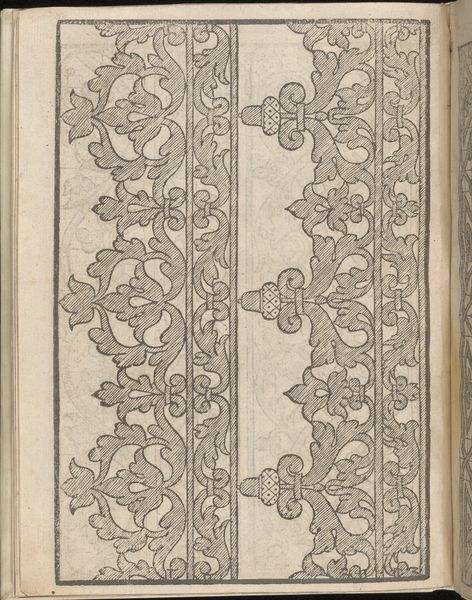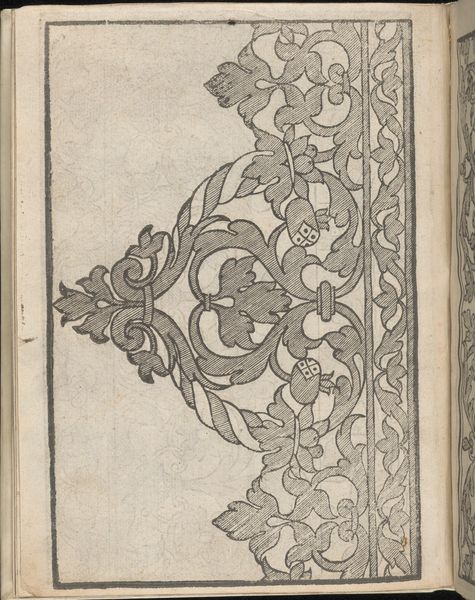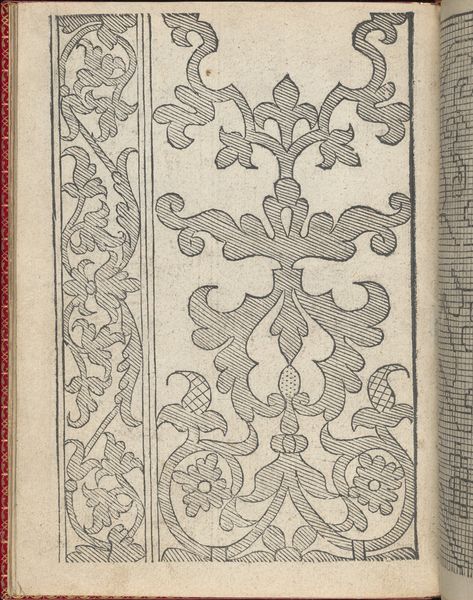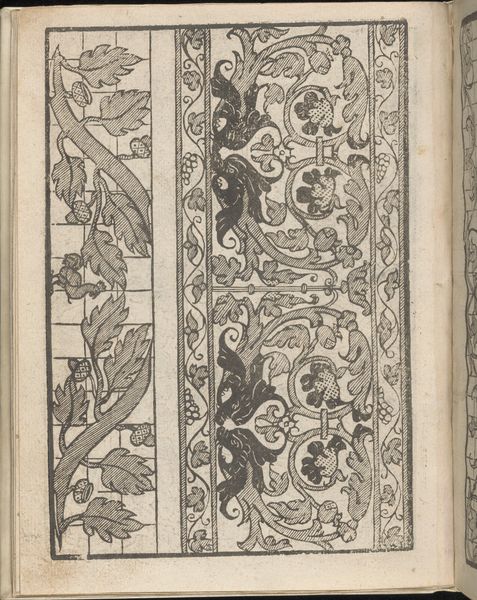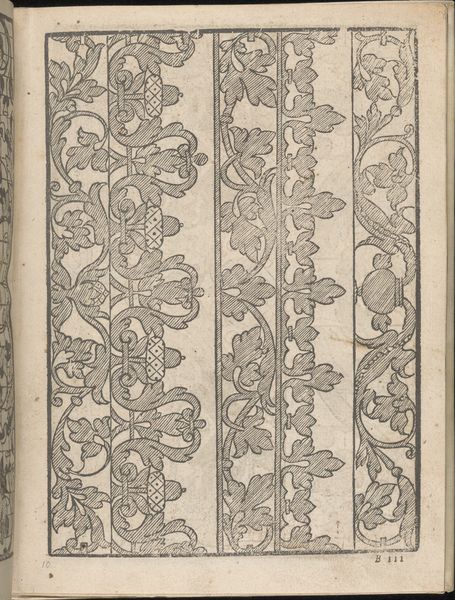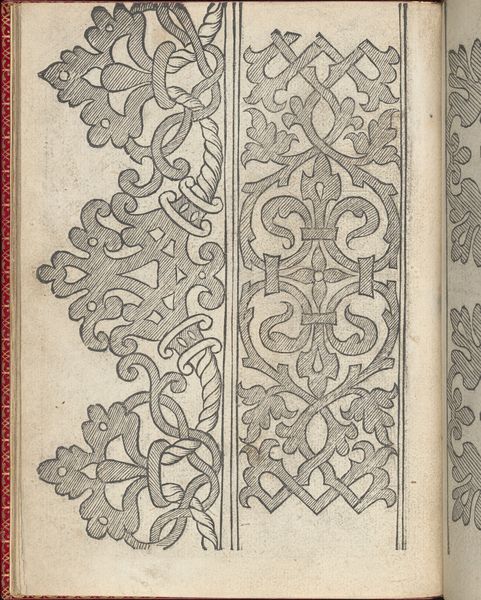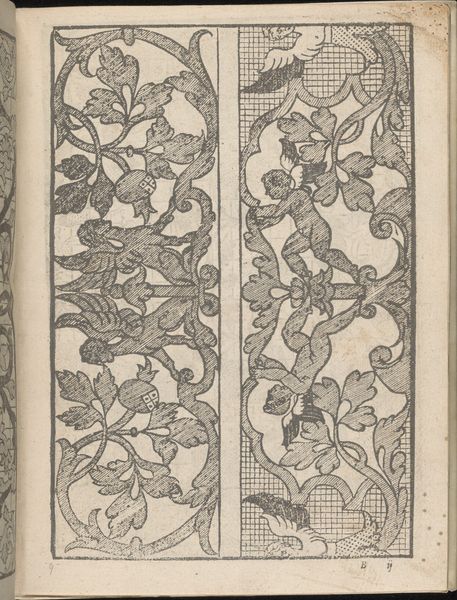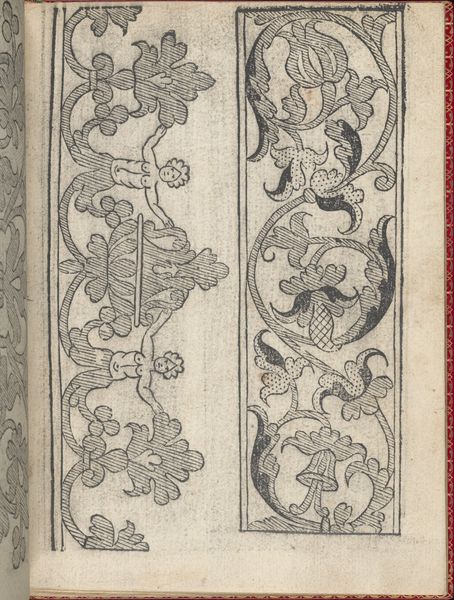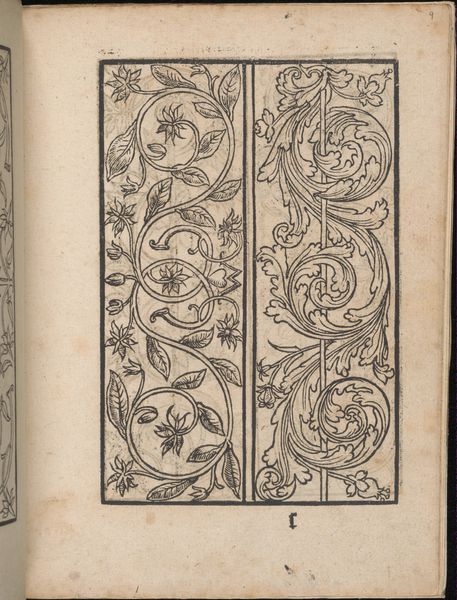
drawing, graphic-art, print, engraving
#
drawing
#
graphic-art
#
pen drawing
# print
#
book
#
11_renaissance
#
geometric
#
line
#
engraving
Dimensions: Overall: 7 7/8 x 5 7/8 in. (20 x 15 cm)
Copyright: Public Domain
Curator: Looking at this, I’m immediately drawn to the almost austere elegance of it all. Editor: That’s an interesting reaction. We’re currently looking at page 9 from Iseppo Foresto's "Lucidario di Recami," printed in 1564. This engraving showcases elaborate patterns intended for lacework. The "Lucidario," by the way, translates to something like "illuminator," implying these designs brought light to the craft of lacemaking. Curator: Illuminator, yes, but the high contrast gives it an almost gothic edge. Like delicate wrought iron. A hint of rebellion hiding in domesticity. It’s the linear quality and geometric repetitions. Were these patterns really used? They feel so... structured for something that would be free flowing. Editor: Absolutely! These designs provided the foundations, and the artisans then interpreted them. Consider the constraints placed upon women during the Renaissance—textile production and decoration served as an allowable, creative outlet, especially within courtly environments. The act of embroidery became a radical articulation of individual will within extremely limited societal expectations. The fact that they pushed up against those borders is worth noting here. Curator: Borders is key! You know, thinking of constraints, there’s something liberating in these tight, repeating grids. They create a rhythm, but don't you think this sort of patternmaking also imposes a certain control? It's about fitting into spaces both literally and figuratively. Like a garden… manicured yet brimming with latent potential. Editor: The controlled garden—I like that analogy. It acknowledges the inherent contradictions and how individuals were able to find spaces to be free in what may have seemed oppressive. And, speaking as one artisan to another, to use them in this way gives respect to the original work, while recontextualizing into new creations. The way lacework offered women in the Renaissance opportunities for entrepreneurship, craft pride, and self-expression are amazing! Curator: And here we are, centuries later, decoding those secret languages and seeing ourselves reflected in those repeating forms. Such possibilities spring from simple lines, it is hard not to imagine that sort of potential with excitement!
Comments
No comments
Be the first to comment and join the conversation on the ultimate creative platform.
